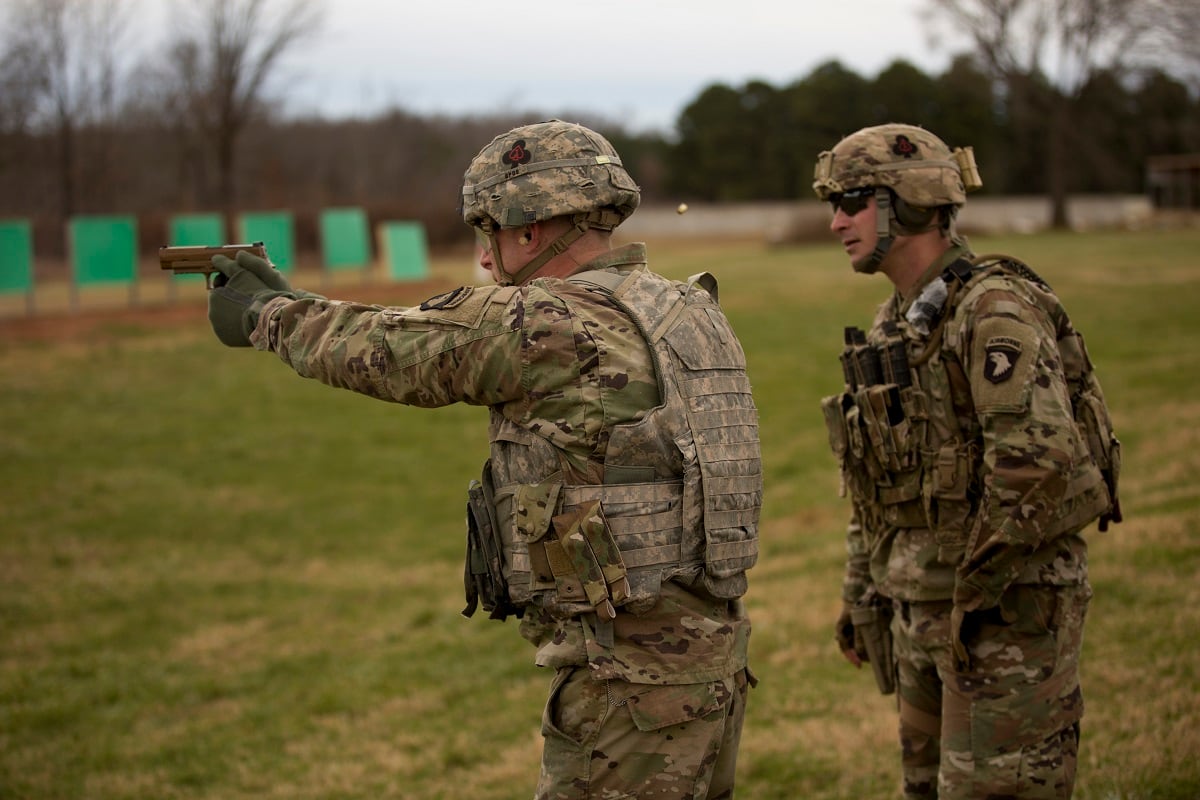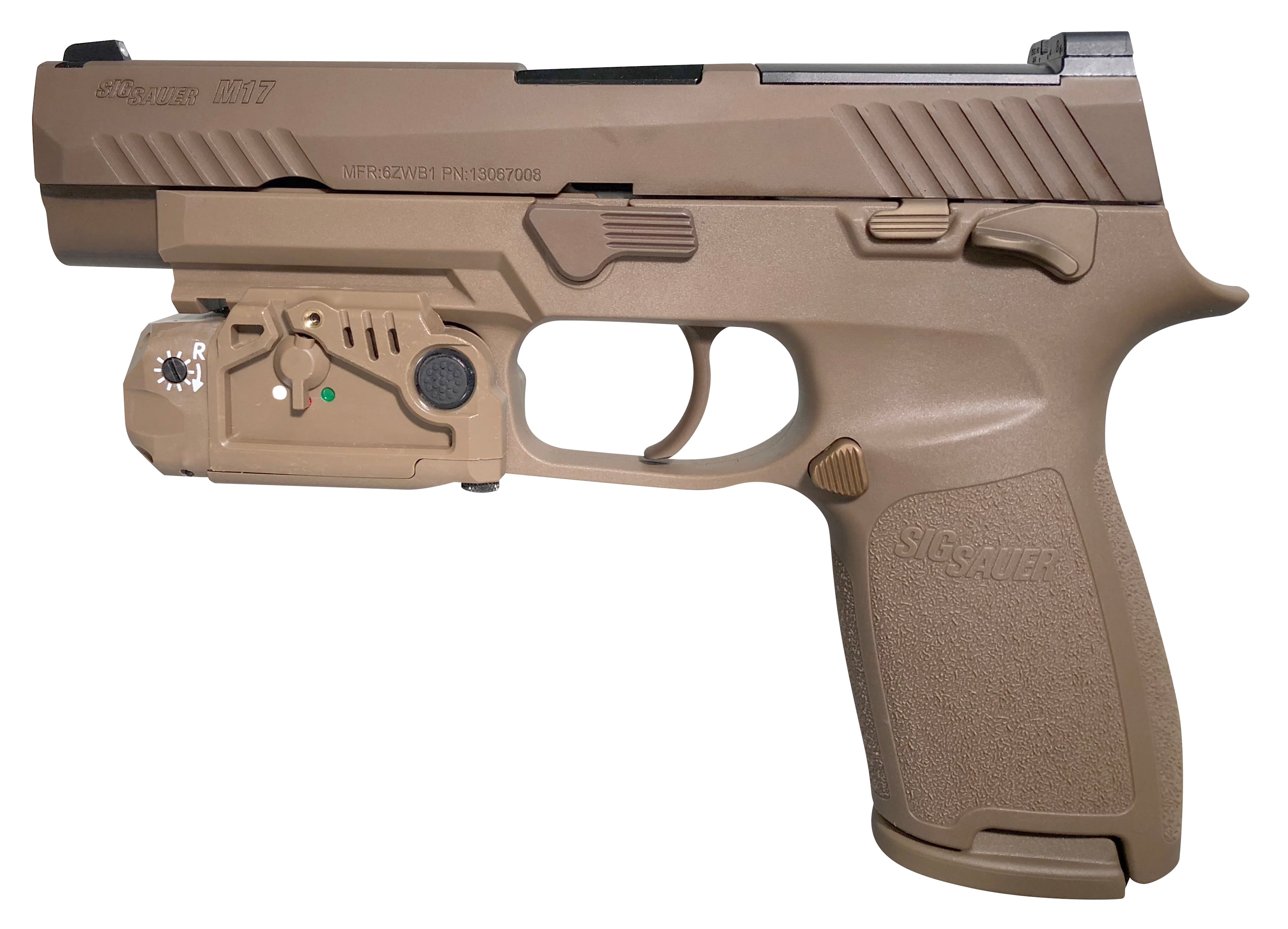Fixes to the Army’s newest pistol last year have drastically increased its reliability, according to a Pentagon report.
Army officials found a “large number of stoppages” when shooting the M17 and M18 handguns with 9mm ball ammunition in early testing. That type of ammunition is the most common configuration used for training and operations.
An annual report from the Director of Operational Test and Evaluation explained how that problem was corrected.
To find a fix, the service assigned a team to work with Sig Sauer, manufacturer of the weapon, and did more testing even as it was fielding the pistol to the first Army units from October 2017 to March 2018.
RELATED

Sig Sauer “made adjustments to the magazine spring, magazine follower, slide geometry, and the internal components.”
And then, during a second wave of evaluations, testers fired 16,500 rounds each through five weapons and filed their findings in December.
The adjustments sought to improve two testing marks — Mean Rounds Between Stoppages and Mean Rounds Between Failures.
After the changes were made, both pistols exceeded the MRBF goal of 96 percent probability of completing two 99-round missions without a single failure.
The compact version, the M18, did a little bit better on the MRBS, hitting 95 percent probability of completing one 99-round mission without a single stoppage using either ball or jacketed hollow point ammo, according to the report. The M17 was slightly lower, meeting 93 percent with ball and 94 percent with hollow points.
The Army first fielded the handgun in November 2017 with the 101st Airborne Division and continued fielding through last year, most recently delivering the M18 compact version to the Army’s Military Police School.
“The Army, including Army Special Operations Command, intends to purchase approximately 233,429 pistols, of which approximately 4.5 percent will be (M18s). The Navy, Marine Corps, and Air Force may collectively purchase 224,000 pistols under the same contract,” according to the report.
It will eventually replace the 1980s-era Beretta M9 pistol, also in 9mm, which has been the standard issue sidearm servicewide since then. It replaced the 1911 .45 caliber handgun that had been in service since World War I.

The pistol is one part of a sidearm system that, in total, includes a drop holster that can be worn on the chest, thigh or belt, a suppressor and aiming light/laser combo.
The Army recently selected Laser Max Defense to provide more than 20,000 pistol enhancers for its M17/M18 sidearm.
The pistol enhancer gives shooters white light, infrared laser and IR illuminator at the flick of a switch.
The device slides on the short rail system at the front of the gun and rests flush with the barrel and sides, keeping bulkiness to a minimum.
Chris Gagliano, marketing director for LMD, told Army Times that design work also included a flat bottom on the device, which gives it added stability when shooting on a platform.
Gagliano said that both the Air Force and Coast Guard, who also fielded the pistol, have been tracking the Army’s testing.
The device weighs 1.9 ounces without the battery and 2.6 ounces with the battery.
The design also allows for operators to change batteries while the device is still on the pistol so they won’t have to re-zero the weapon.
Todd South has written about crime, courts, government and the military for multiple publications since 2004 and was named a 2014 Pulitzer finalist for a co-written project on witness intimidation. Todd is a Marine veteran of the Iraq War.




